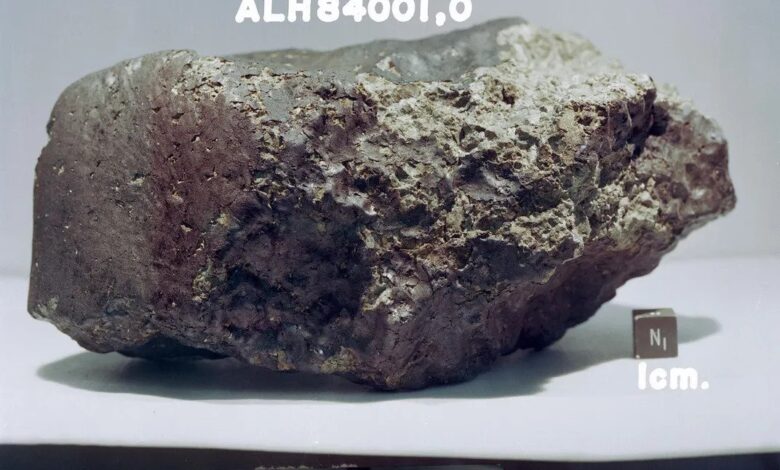
This 4.5-billion-year-old Martian rock landed in Antarctica about 13,000 years ago. Image Credit: NASA
SocietyTechnology The WorldWe’re Getting to Know Mars Better and Better
Since humankind started exploring Mars almost half a century ago, many discoveries have been made, from subterranean secrets to meteorological phenomena, on the Red Planet, our planetary neighbour.
“It’s so close,” says Shannon Curry, a planetary physicist at the University of California, Berkeley, and the principal investigator of the Mars Atmosphere and Volatile Evolution mission. “We’re lucky that we get to explore it the way we can.”
Mars is some 225 million kilometres away and can be reached in less than a year. There have been 20 successful missions – flybys, orbiters, landers, rovers – since 1965. The first Mars mission was the Mariner 4 probe, which took pictures of the planet’s barren surface. Other missions have shown that Mars lacks liquid water but has slow-moving dunes and impressive volcanoes. The atmosphere on Mars is wispy; it has an atmospheric pressure of only 0.7% of Earth’s. Indeed, it cannot trap heat from the sun to keep the surface warm throughout the day – the average temperature is minus 62 degrees Celsius. It also hosts dust storms with dust particles of iron oxide – as in rust, which gives the planet its nickname – speeds up to 96 km/h. There was once liquid water on Mars: in 1971, Mariner 9 collected samples that proved that liquid water vanished 2 to 3 billion years ago. There was a time when Mars was cosy, wet, lusciously gassy, and protected by a magnetosphere. During that period, the planet could have harboured life. Only samples from meteorites collected on Mars can help scientists answer the question, “Does Mars have or has had life?” More questions will arise – and could be answered – once the latest retrieved samples are due to arrive on Earth in 2033.



